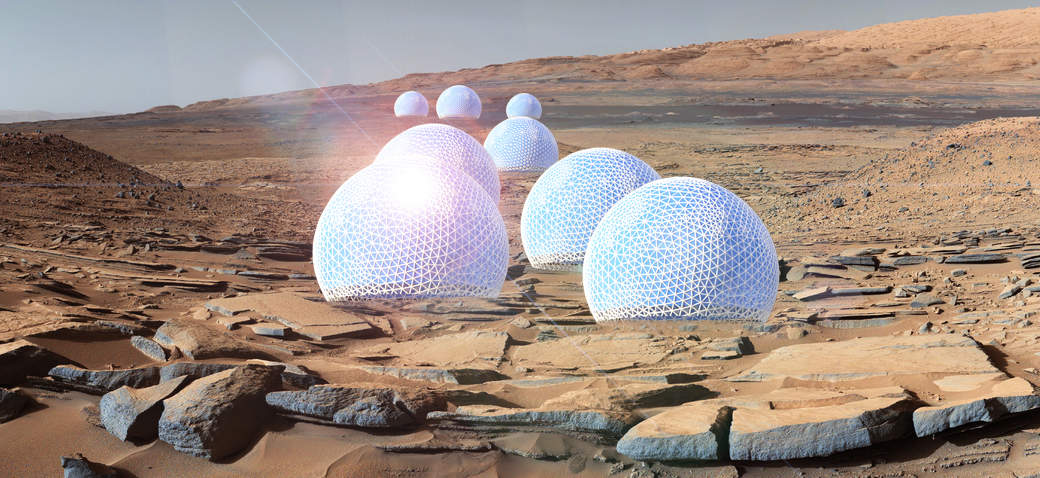
From a forest-inspired city in the Martian desert to trees that create electricity from cosmic vibrations, the winning designs in the 2017 Mars City Design challenge are, well, out of this world.
Designing cities and buildings that support sustainable human life on the Red Planet seems like the stuff of science fiction.
However, LA-based think tank Mars City Design (MCD) is determined to make it a reality.

The annual Mars City Design challenge is “applicable to all earthlings” and invites applicants to boldly go where no designer has gone before.
As such, architects are challenged to imagine how large-scale cities on Mars might work. In addition, they must pay particular attention to how they will look and feel to the people living there.
“Our goal is to provide the required shelter while feeding the heart and souls of the inhabitants,” says MCD founder and CEO Vera Mulyani.
Mars City Design: the Redwood Forest City
Architects are forever pushing the boundaries of design in order to reimagine the built environment on Earth. Redwood Forest City goes one step further by creating domes or tree habitats on Mars that house up to 50 people.
The domes provide open, public spaces containing plants and water harvested from the planet’s northern plains.
Below the bubbles are transportation tunnels or ‘roots’ that link to other habitats in the community of 10,000. In addition, they offer protection from radiation and micrometeorites.

As a result, the MIT design triumphed in the MCD architecture category.
“On Mars, our city will physically and functionally mimic a forest, using local Martian resources such as ice and water, regolith or soil, and Sun to support life,” said co-designer Valentina Sumini.
“Designing a forest also symbolises the potential for outward growth as nature spreads across the Martian landscape. Each tree habitat incorporates a branching structural system and an inflated membrane enclosure, anchored by tunneling roots.
Tree of Life
Tree of Life designed by Beirut architect Samer El Sayary won in the sustainable energy category.
The structure converts high-frequency vibrations from wind and cosmic rays into electricity to help sustain life inside.
“This will be the first generation of trees to be planted on Martian soil,” says El Sayary. “Vibrations are the most abundant and effective way to harvest energy, instead of the traditional solar photovoltaic cells, which depend totally on only one source – the Sun.”
Marscapes and Around Mars in 80 Days
Other MCD winners include urban design project Marscapes.
The concept involves sending modules containing resources to Mars for the purpose of building offices, apartments, and sports and leisure facilities.
Designers were also tasked with imaging how humans would travel around the Red Planet.
The team behind Around Mars in 80 Days triumphed in the transportation category thanks to their futuristic take on the story of Phileas Fogg.

Two hydrogen balloons carry up to three passengers above the surface of Mars in a polycarbonate basket. A custom rover vehicle then latches onto the balloon’s guide rope and winches it to the ground.
LEAF Review contains the latest architectural news and analysis. Read the latest edition here.
If you enjoyed this article, then read more here:
Symbioz − the connected concept car that doubles as a room in your house
“The next building is going to be the funkiest one” – architect Sir Peter Cook
“The world’s skylines have changed forever” – designer Vanessa Brady OBE


